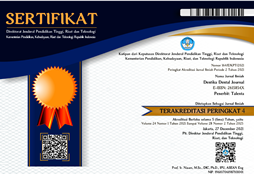The Difference Upper Incisor and Upper Molar Alveolar Bone Loss between Smoker and Non-Smoker Patient with Chronic Periodontitis
Perbedaan Kehilangan Tulang Alveolar Gigi Insisivus dan Molar Rahang atas pada Pasien Periodontitis Kronis Perokok dan bukan Perokok
DOI:
https://doi.org/10.32734/dentika.v22i1.269Keywords:
Chronic periodontitis, Smoker, Alveolar bone loss, upper incisor, upper molarAbstract
Periodontitis is one of most common oral disease. Chronic periodontitis is characterised by gingival inflamation, periodontal pocket, lost of attachment, and alveolar bone loss. Smoking is a risk factor of periodontal disease that has direct effect to periodontal tissue. Smoking prevalence in Indonesia during 2013 was about 56,7% among men and about 1,9% among women. Smoking modifies the periodontal microbial challenge and host cytokine levels. Some studies showed that smoker has greater alveolar bone loss than non-smoker, and teeth that have the greatest alveolar bone loss are incisor and followed by molar. The aim of this study is to know the upper incisor and upper molar alveolar bone loss differences between smoker and non-smoker patient with chronic periodontitis. The study’s samples are 92 chronic periodontitis statuses and 200 periapical radiographs that selected by purposive sampling techinque. This study will measure the distance between cementoenamel junction to alveolar bone crest, cementoenamel junction to tooth apex, and alveolar bone loss percentage at upper incisor and upper molar. To compare the differences upper incisor and upper molar alveolar bone loss at patient with chronic periodontitis between smoker and non-smoker will be analyzed by independent t test and Mann-Whitney U test. The result showed that smoker has greater alveolar bone loss than non-smoker. There is no significant differences at upper incisor alveolar bone loss and there is significant differences at upper molar alveolar bone loss between smoker and non-smoker patient with chronic periodontitis.















